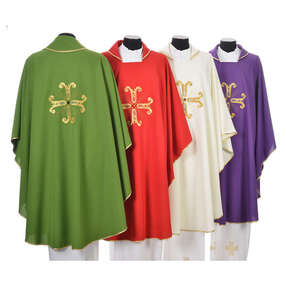Join us for worship
|
10:00 am Wednesday - An informal service of Holy Communion followed by morning tea next door.
6:00 pm Saturday - A quiet, reflective service of Holy Communion. This is a spoken service with no hymns. 9:00 am Sunday - A family friendly traditional service of Holy Communion based on the current Anglican Prayer Book, with hymns and sung responses (most weeks). The service and the songs for this service are projected onto screens at the front of the church, making it easy to follow along, especially for new comers to Anglican worship. There is a special children's song as part of the service. All of our services are conducted in the Anglican tradition of Christian worship, which means every service normally includes: Prayer (We have a practice of 'Common Prayer' when we gather - of course we also pray individually) Contrition (acknowledging the wrong we have done and hearing the assurance of God's forgiveness) Reading from the Bible Teaching (a sermon which helps us to understand more fully what we have read) Singing (we sing hymns and worship songs as part of most of our services.) Our services also often include: Holy Communion (We receive bread and wine in remembrance that Jesus gave up his body and blood for us, we recognise that through this 'sacrament' Jesus strengthens us for our journey) |
What's with all those funny clothes?
|
If you attend a traditional service of Holy Communion you may notice that our priest/minister and others that help lead the service wear special robes. This is not because they think they are more important than anyone else! Each of the 'vestments' that the leaders wear has a symbolic meaning.
The most common thing you will see is a long white robe called an 'alb'. The Alb covers the priest and other leaders' regular clothes - it is meant to be a reminder to everyone that when we put our faith in Jesus, he washes away our old sinful selves which are 'red as crimson' and makes us appear 'white as snow' (Isaiah 1:18). Other things you may notice include the priest wearing a 'stole' which looks like a long scarf draped over their shoulders, this is again a symbolic garment. The stole is to identify their role as one set apart (ordained) to lead God's people, and to remind them and the congregation that their ordination means being a servant - the stole traditionally represents a servant's towel draped around the shoulders which was used to wash the feet of those they served. At traditional Communion services you may also see a 'chasuble' being worn by the priest. The Chasuble is a coloured garment which looks a bit like a poncho. This represents the 'yoke of Christ', and is meant to be symbolic of the love of God covering our sinfulness. Why do only the leaders wear the special clothes? Mostly because of practicality! It wouldn't make much sense for everyone to have to organise white robes to come to church! The leaders have been called to serve the people of God and so they wear the robes, both to point to their role, and to remind us of the love and forgiveness of God in a symbolic way. Is it necessary? Many things we do aren't necessary, however are there to aid us in what is necessary. The vestments are not necessary for worshipping God, but the church has used vestments since the earliest times because they are a visual aid to remind us that it is God we worship because of what he has done for us. When the priest puts on those clothes they are a reminder to us that he is only there to point us to God and not himself. The vestment is meant to cover the person wearing it as a reminder that the person is there to perform a function - they are not the important one! God and the things he has done which is symbolised by those vestments are who and what matters. |


